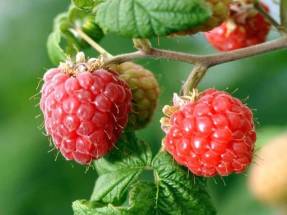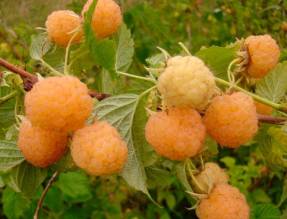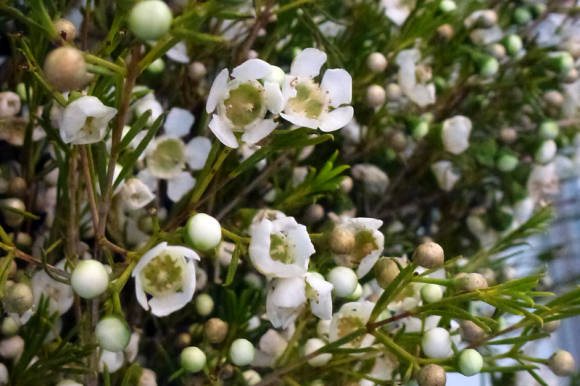
So you want to taste the fragrant and sweet raspberries as soon as possible in the summer. And to make a reserve for the winter - this berry is an excellent remedy for angina and flu. As soon as the first signs of the disease appear, you will fill in freshly frozen raspberries, pour boiling water over it, make a sandwich with butter, rub it with garlic - you will not need antigrippin.
In Babino, there is an opinion that raspberries do not grow well on our soils. Therefore, it is rare for anyone to find thickets of raspberries on the site. Although there are a lot of forest raspberry bushes along the sides of the clearing, along which the power line goes. It seems that there is not enough light there because of the willow bushes and no one specially prepared the soil for it, but you push the bushes apart and here it is - forest raspberries.
So why don't we grow raspberries? Let's try to figure it out.
Growing conditions and soil
Raspberry grows well when it is planted on the south side of buildings - a house, a barn or a bathhouse. It is even better if the landing site is illuminated by the sun all day. This is the ideal case, as the experts recommend. But, if there is no way to plant raspberries in a sunny place, then you can do with partial shade. I have raspberries growing along the southern border of the site, illuminated by diffused sunlight - on the north side there is a neighbor's greenhouse and a house.
If the soil on the site is swampy, then it is better to plant raspberries in the beds. This is done on the site of our neighbors - the bed is flat, excess water flows into the drainage ditch, the raspberry itself is a sight for sore eyes. Raspberries also do not like too dry places, therefore, when there is no rain for a long time, it must be watered.
Special conversation about soil. The soil should be loose, manured, neutral, that is, not acidic. Therefore, we pay special attention to soil preparation. Dig a ridge 1.2 m wide to clay. In the middle of the ridge, along its entire width, we dig a groove in the clay “for the bayonet of the shovel”. We fill this groove with semi-rotten roots and sprinkle with dolomite flour. In a rainy summer, excess water will be drained from the garden along this groove.
For each meter of the ridge, we add two buckets of rotted manure, one bucket of river sand, two buckets of peat, pour everything with dolomite flour and add ash.
It is good to loosen the soil with sawdust, but they must be rotted. For 2-3 years we have them in heaps and only after this period we bring them into the beds. It is advisable to pick all the weeds. Left in the soil, a small root of dream, an ubiquitous weed, will grow back into a lush plant. Choosing it from the plantings of raspberries after planting is a difficult task.
We plant raspberries in two rows in spring or autumn, the distance between the rows is 0.7 m, between the bushes - 0.5 m. In autumn, the best planting dates are late September - early October. For the third year now, autumn has been warm, with an even temperature, without frost. In October, the seedling manages to take root and grows quickly in the spring. When planting, we leave 3-4 buds. Buds at the roots, basal buds, should be in the ground.
Usually, seedlings are bought at exhibitions. If the raspberry is remontant, then the seedlings are sold even with berries. You can immediately, when buying, cut the seedlings five buds from the root, and when planting, four more. Then you don't have to carry heavy one and a half meter bushes.
If it was not possible to plant raspberries in the fall, dig in the bush until spring. I usually, if I do not have enough time to plant, plant the seedling immediately in a five-liter plastic container. For the winter, I dip in the balloon obliquely and close it with spruce branches, and in the spring, until the buds have blossomed, I dig it out and put it in a sunny place - let it grow before planting. And I land when I have free time. The good thing about container plantings is that they can be planted at any time - in spring, summer or autumn. But raspberry seedlings with an open root system should be planted in early spring, until the buds have blossomed. After planting, the bushes are watered abundantly with water and mulched with peat, humus or rotted sawdust.
Top dressing
I feed raspberries 3-4 times a season, and only organic. In the spring, in April, I spill mullein infusion. I fill the bucket half with a mullein, let it brew for two weeks, then I dilute 1 liter of this infusion in 10 liters of water. Approximate consumption: one watering can for 1 square meter of garden. After that, the soil is mulched with rotted sawdust. I do this in April, until the raspberry sprouts new shoots.
After three weeks, I feed it with either green fertilizer or an infusion of chicken manure. Chicken droppings, like mullein, I insist for two weeks, I dilute 0.5 liters of infusion in 10 liters of water.
Green fertilizer can be harvested from mid-spring. I fill a two-hundred-liter barrel by one third with mullein or humus, supplement it to the top with weeded weeds, fill it with water, close the lid and insist for two weeks. The green fertilizer is ready for the whole summer. We dilute 1 liter of infusion in 10 liters of water.
In the second half of summer, the bushes can be fed with ash infusion, but I, for lack of time, just spray the ash. And in the fall, I once again mulch the plantings with humus or rotted sawdust.
It is also important to remove the growth on time. On last year's bushes, 5 or 6 shoots should be left for fruiting. In the spring, shoots begin to grow, which will bear fruit next year. They also need to be left 5 or 6. The rest must be broken out when they are still very small.
It is even easier with remontant varieties. We leave 5 or 6 shoots in each bush. We break out the rest.
Pest control
It is important to carry out disease prevention and to resist pests on time. If you see that the tops of young shoots have wilted, know that these are the tricks of a raspberry stem fly. She lays eggs in the axils of the upper leaves. Therefore, as soon as young shoots appear, I pre-treat raspberries with Iskra. Then, during the summer, you can spray the bushes with infusions of garlic, onions, tomato tops.
And be sure to attract birds to your garden. One starling family living in your garden can be invaluable. Watch the starlings when they have hatched offspring. The wide-open beaks of eternally hungry chicks peep out of the birdhouse, and tireless parents endlessly drag them food - the very pests of the garden that destroy our plants, flowers and fruits.
About varieties
Let's start with the varieties that can be planted in our plots. We have planted summer raspberry varieties, several remontant raspberry bushes (fruiting in autumn) and several modern large-fruited varieties. It is not possible to write about all of them in the article, but I will still tell you about some of them.
Kuzmin's news

I cannot but mention this raspberry variety, bred by N.V. Kuzmin in the city of Vetluga, Kostroma region, almost a hundred years ago. This variety has been growing on our site almost from the very foundation of horticulture. The plant is vigorous, the berries are large, up to 4 g, up to 2 cm long, self-fertility is high, which means that no other pollinator variety is required to obtain a crop. A variety of high winter hardiness, I never bent it down for the winter, and sometimes frosts in our country, in Babino, are down to -42oC. Kuzmin's news refers to varieties of early ripening, for the Leningrad region this is the second half of July. But, I want to remind you that the ripening time of raspberries can vary depending on the weather: early spring, warm summer - and early harvest, late spring and cold summer - the fruits can ripen a month later than the due date for them. But in general, the yield of the variety is good, with sufficient care and watering, up to 2.5 kg of berries can be removed from the bush.
Yellow giant

This variety, bred by the breeder V.V. Kichina, my son and I acquired in Moscow, almost first-hand. The variety lives up to its name, the berries are large, yellow, tender, sweet. Anyone who sees the berries is always surprised at their size, but you need to know that the berries are tender, not easily transportable and you cannot skip the time of their removal from the bush.The bushes themselves are tall, with good care they can grow up to 2.5 m. It gives a lot of growth, it is not difficult to breed it. Winter hardiness is high, the bushes do not need to be bent down for the winter.
Tenderness
The variety was bred at the Leningrad fruit and vegetable experimental station, where our famous breeder GD Aleksandrova works. About 5-6 years ago we managed to acquire this variety from reliable sources and we are quite happy with it.
The variety is of medium ripening, the berries ripen in the first half of August. The bushes are medium-sized, there are few thorns. Berries are blunt-conical, large, red, very tasty. The variety is resistant to disease.
Cumberland

If you want to get not only taste, but also aesthetic pleasure, then plant Cumberland raspberries. In your thickets of raspberries, raspberry bushes with red, yellow and black berries will ripen almost simultaneously. For now, this raspberry is being replaced by the black blackberry Agave. The same tall bushes up to 2.5 m, the same black sweet berries, reminiscent of the taste of mulberry. But the difference is that in raspberries the stalk is detached, while in blackberries it is not; raspberries Cumberland do not give root suckers, and blackberries Agaves give growth. Both raspberries and blackberries have much higher yields than other varieties of raspberries. Winter hardiness of this blackberry variety is high - I have tested it for many years. And raspberries, according to experts, are quite winter-hardy.
Repaired varieties
It is tempting to have remontant varieties on the site. It is very easy in late autumn to cut off the stems that have grown and already bear fruit during the season at the root. In addition, at this time there is no most terrible pest - the raspberry beetle, he has already gone to winter. You take off the berries clean, without worms.
I have three remontant varieties, one of them is Indian Summer. This is a variety of early ripening, berries in the Moscow region ripen at the beginning of August, but in our country it is ten days later. The berries are large, up to 3.3 g, round-conical, bright red, sweet with a slight sourness. The crop was not weighed, in the literature it is mentioned that with high agricultural technology, you can get up to 2 kg per bush. You can also try another variety of remontant raspberries - Indian Summer-2, it belongs to the early and winter-hardy varieties.
And remember that we are in the North-West - in the zone of risky farming, therefore, it is necessary to purchase remontant raspberries only of early varieties; to allocate sunny areas under it, which are not blown by our, at times, icy, northern winds. And the summer should be not cold.
It is a pity when part of the crop does not ripen and you have to cut out bushes with unripe berries. But almost until frost, this berry can be eaten directly from the bush. And twigs, even with unripe berries, I recommend cutting, drying and brewing in case of flu or sore throat.









